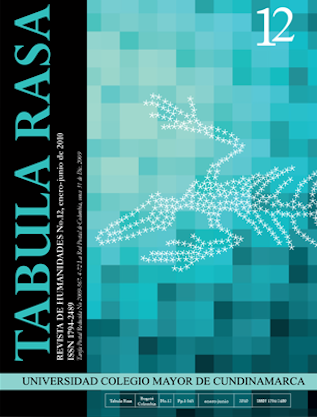Between spoil and banishment: social representations of territory among a displaced population settled in the county of Soacha, Cundinamarca
Entre el despojo y el destierro: una aproximación al problema de la tierra en familias desplazadas por la violencia en Colombia
Show authors biography
This paper follows the theoretical-methodological guidelines for the study of social representations of territory. It aims to report findings from an ongoing research whose goal is understanding which social representations are guiding practices and interactions among forcedly displaced individuals, settled in communes four and six in Soacha county. According to our findings, it can be said that social representations built by the displaced population legitimate banishment and spoil they were submitted to, since they presuppose the impossibility to recover their lands and have no hopes to return to the place they were tore away from. They just pursue settlement and socio-economic stabilization alternatives in the places they have been taken in. Forced displacement results in marginality and poverty, people undergo a break, turns rootlessness into a continual condition, but people persist in maintaining their lives in exile.
Article visits 116 | PDF visits 93
Downloads
Busso, G. 2001. Vulnerabilidad social: Nociones e implicancias de políticas para Latinoamérica a inicios del siglo XXI. Santiago de Chile: CEPAL.
Chávez, Y., U. Falla y Y. Romero. 2008. Llegamos defendiendo nuestras vidas. Reflexiones sobre el desplazamiento forzado en Soacha, Colombia. Bogotá: UCMC.
COHDES. 2010. ¿Salto al vacío o un salto estratégico? Boletín Informativo, número 76. Bogotá.
Ibáñez, A. 2004. Acceso a tierras y desplazamiento forzoso en Colombia. Bogotá: Universidad de los Andes.
Kaztman, R. 2000. Notas sobre la medición de la vulnerabilidad social. 5° Taller Regional. Santiago de Chile: BID – BM – CEPAL.
Pizarro, E. 2009. «Reparar el bote en alta mar». En: Ley de Justicia y Paz. E. Pizarro y L. Valencia. Bogotá: Norma.
Procuraduría General de la Nación. 2006. Seguimiento a políticas públicas en materia de desmovilización y reinserción. Bogotá.
Semana. 2009. «Los están matando. Especial de robo de tierras». http://www.semana. com/noticias-nacion. 14 de marzo.
Romero, Y., L. Arciniegas y J. Jiménez. 2006. «Desplazamiento y reconstrucción de tejido social en el barrio Altos de la Florida». Tendencias y Retos nº 11: 11-23.
Suárez, A. 2002. Aspectos metodológicos para la medición de la vulnerabilidad social a partir de encuestas de hogares: la experiencia colombiana. Santiago de Chile: CEPAL.




